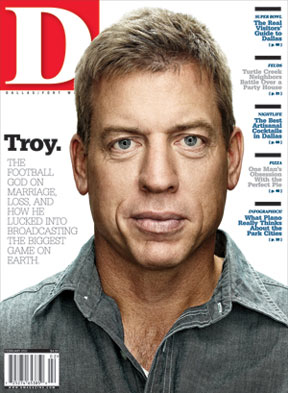Fifteen years ago, a social psychologist from California State University, Fresno decided to measure the speed at which cities function, that whir and hum of urban life. Dr. Robert Levine gathered data from 36 cities around the country and another 31 abroad. He came to Dallas with a roll of string and a stopwatch, and at Main and Field streets downtown, he timed how long it took unwitting passersby to walk 60 feet. He called post offices and counted how many words per minute the workers spoke. He measured the rate at which bank tellers handled customers, and he checked the accuracy of clocks.
Levine published his findings in a book called A Geography of Time. Turns out, Dallasites, on average, take 13.22 seconds to walk 60 feet, ranking us 26th out of the 36 U.S. cities he studied. Springfield, Missouri was the fastest, at 11.09 seconds. Boston was third, at 11.34. New York was 11th, at 12.31. Slowest was Fresno, at 14.73. A composite “pace” index, taking into account the clocks and tellers and postal workers, ranked us 32nd of 36.
To oversimplify, Levine found that big, dense cities function faster than small ones. No surprise there. What is surprising was that Dallas, the seventh-most populous city at the time, functioned so slowly. Was it because we’re in the South, where climate and manners dictate a more leisurely pace? Overall, Atlanta ranked 18th, well ahead of Dallas. The differences couldn’t be fully explained. The math of cities had to evolve.
Ten years later, along came a theoretical physicist named Geoffrey West who’d taken to studying cities after he’d grown bored with things like quarks, dark matter, and string theory. Cities, having defied meaningful mathematical study, were a perfect subject for a left-brained, mathy guy like West. From previous work in biology, studying the size and metabolism of various creatures, he knew there is an economy of scale applied to organisms. Large animals use less energy per body mass than small ones. In his new field of study, he found that cities work on a similar economy of scale. Big cities use less resources and infrastructure—aka input—per capita than small ones. However, he also found that the larger cities get, the more wealth and opportunity—output—they produce per capita.
These natural advantages are why cities have endured for so long. But there is a flip side to the equation. The process of converting that input into output can be thought of as the metabolism of cities. Along with the inherent competitive advantages of cities, increased metabolism also produces more bad things such as pollution, crime, and disease. That’s why innovation is so critical. As West says, the larger a city grows, the faster it must innovate so that it can stave off the negative effects of growth.
What West found is that beneath their complexity, cities function in ways that can be described by pretty simple equations. If you told them how many patent applications were filed from a given city, they could tell you its population to within 10 or so percentage points. Conversely, if you provided the population, they could tell you how many libraries it has. Working in that direction, they could measure whether a city is outperforming expectations—whether it was innovative.
Ultimately, West identified three quantifiable, common characteristics of innovative cities: density, diversity, and pace. The latter metric is what drew them to Levine’s work. Though all statistics are abstractions, to the physicists, “pace,” or the speed at which a city’s residents walk, is a nice way to measure a city’s metabolism—how quickly it innovates, how its people churn through the competition of new ideas. A city’s population molds, shapes, and ultimately tests ideas locally before exporting them to the global market. Innovative cities are fast cities.
North Texas is the fastest-growing region of the country. If Dallas is to continue thriving, it will have to innovate—and do it faster. We have to change the inputs of the urban innovation equation. One way to do that is to remove obstructions to density, ridding ourselves of subsidies that promote sprawl and low density.
While Oklahoma City and New Orleans move forward with plans to remove freeways to create more walkable neighborhoods, Dallas and Fort Worth are, respectively, second and third in the nation in highway miles per capita (according to the latest statistics, which were gathered in 1999). What happened to the economy of scale? As the fifth-largest metropolitan area in the country, we should have the fifth least highway miles per capita. We move at a small town’s pace, but we have big-city problems.
Innovation increases in dense cities because creativity doesn’t flourish in a fortress of solitude. We learn from and inspire others. In a free market economy, density equals desirability. Innovators want to live near where they work, and they want to walk. And nobody wants to live next to a highway.
We can make Dallas a wonderful, walkable, dense place that creative individuals flock toward, or we can continue to march toward the folly of the broke and the absurd, adopting some new invention to make us all move faster. But we would probably have to import that idea from some other innovative city, and that kind of defeats the point.
Write to [email protected].






